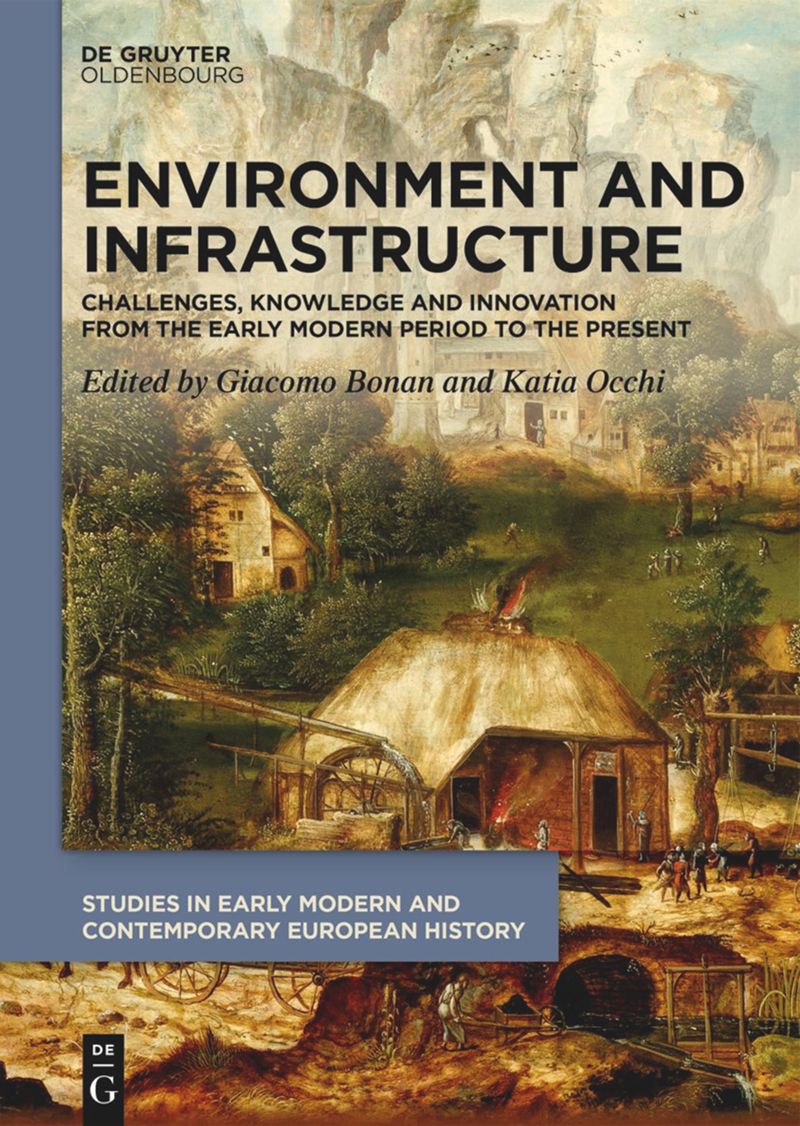


Reviewer Koldo Trapaga Monchet - Universidad Rey Juan Carlos
CitationAs John R. McNeill mentions in the conclusion, a characteristic common to all the chapters is their high quality. While each of the contributions deserves a specific mention in its own right, the perfect combination of themes and the various chronological and temporal scales of all of them furthermore make these essays a significant contribution, notably but not limited to the fields of history of the environment and technology.
This book is structured into five sections, preceded by an introduction in which the editors offer a brilliant theoretical and bibliographical survey of the evolution of ‘infrastructure’ as a hybrid environmental-technical system. The introduction conveniently establishes the framework that makes it possible to look beyond temporal arrangements (pre and post industrialization).
The first section includes an essay in which Helmuth Trischler and Fabienne Will discuss how the ‘Anthropoceneʼ is viewed within academia as a geological and cultural concept and outside academia as a social phenomenon. From here, they provide an overview of the new narratives and temporalities of the relationships between humans, technology, and the environment that have emerged since the term Anthropocene was coined. They argue that the Anthropocene has not yet reached its full potential, and has facilitated cooperation across traditional scientific boundaries. The contributions of this book are set in this interdisciplinary and transdisciplinary framework.
Sections two to four include three essays each. The second section revolves around urban metabolism and hinterlands from the Early Modern Period to the present. Georg Stöger addresses the socio-environmental infrastructures of the cities of Linz, Salzburg, and Vienna in relation to the supply of key raw materials such as firewood, grain, and water, as well to coping with fire and flooding as urban environmental risks. Claudio Lorenzini analyses the socio-environmental infrastructures (stues and stuetti) for timber transport as an enviro-technical system through a multilayered approach that unravels the wood production chain in the Early Modern Friuli mountains, especially in the upper basin of the Tagliamento River. Both contributions are based on solid archival research and a large multidisciplinary bibliography. The third essay examines the Uranium histories of the Soviet Wismut company from its inception in 1947 to its disbandment, and the socio-environmental consequences of Uranium production through a two-year interview project conducted from 2018 to 2022 by a multidisciplinary team as part of the Wismut Witness Heritage Project. This project is well structured and methodologically brilliant.
The third section focuses on the multiple scales of enviro-technical systems. Giacomo Parrinello focuses on the way in which natural watercourses have been converted into technical hydraulic infrastructure, giving rise to a structural mismatch between the hydrological processes and the scales of infrastructures. The case-study of the Po River basin shows that these mismatches have had a lasting impact since the late nineteenth century to the present time. Frédéric Gaber looks at the ‘domestication’ of the public concerning the infrastructure projects from early nineteenth-century France through the enquête publique administrative inquiries. At first, policy makers were concerned with ensuring the legitimacy of infrastructure constructions by enhancing public participation. Although, with the rise in environmental awareness, this tool became outdated and began to be contested by the 1960s and 1970s, the inquiries were not reformed. Simone Müller’s contribution unravels the power dynamics between the Global North and South. Surveying the different narratives that emerged on the interplay between technology, economic development framed within the American dream and the environment, this author analyses the evolution of the Global Waste Economy from the 1920s to the 1980s in a case-study of Puerto Castilla (Honduras).
The fourth and last section pays special attention to infrastructures for water control, management, and use. Matteo Di Tullio analyses the creation of water infrastructures for human socio-economic production in early modern Lombardy. The establishment and maintenance of rights over the use and allocation of watercourses were a collective process that triggered conflicts, reproduced social hierarchies, and led to social and institutional collective arrangements, resulting in a cooperative living infrastructure.
Tim Soens reconsiders extreme river floods in north-west Europe in July 2021 through the lens of infrastructures constructed to deal with unexpected floods as socio-natural ‘hybrids’. Prior to 1800, local authorities managed water floods through soft flood protection measures. After the Industrial Revolution, when people had settled in riverine areas, these were replaced by hard infrastructures whose convenience might now have expired – as the floods of July 2021 evidenced.
David Gentilcore revisits the narratives of water infrastructures employed in the Kingdom of Naples in the early nineteenth century. He challenges the long-held notion of ‘decay’ portrayed by Enlightenment thinkers by analysing types of water supply and water improvement techniques and unequal access to and uses of water resources.